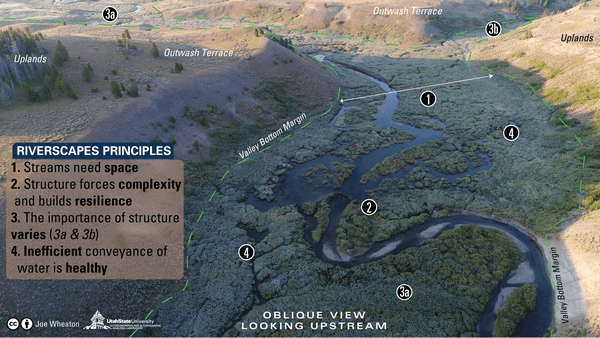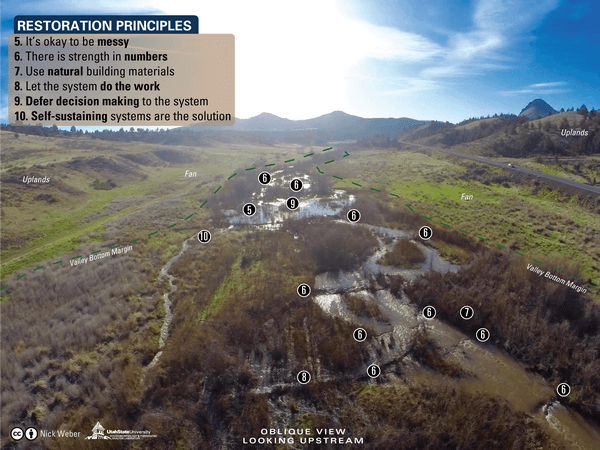Chapter 2: Principles of Low-Tech Process-Based Restoration
The second chapter covers the underlying principles necessary to understand low-tech process-based restoration.
Full PDF available for free at ResearchGate, but requires a free account.
Riverscapes Principles

Restoration Principles

Implications for Practice
Key Points:
- Low-tech process-based restoration principles are critical as a basis for applying low-tech treatments and for managing expectations about timing and outcomes.
- These principles help practitioners tackle low-tech restoration of structurally-starved riverscapes, though many could apply more broadly.
- Guiding principles fall into two categories:
- Riverscapes Principles – describing what constitutes healthy riverscapes to define restoration goals
- Restoration Principles – influencing how to plan, design, and implement restoration
- Since this manual focuses on structurally-starved riverscapes, principles emphasizing processes like wood accumulation and beaver dam activity are highlighted.
Recommended Citation
Wheaton, J.M., Bennett, S.N., Bouwes, N., Camp, R., Maestas, J.D., and Shahverdian, S.M. 2019.
Chapter 2 – Principles of Low-Tech Process-Based Restoration.
In: J.M. Wheaton, S.N. Bennett, N. Bouwes, J.D. Maestas and S.M. Shahverdian (Editors), Low-Tech Process-Based Restoration of Riverscapes: Design Manual.
Utah State University Wheaton Restoration Consortium, Logan, Utah. 30 pp.
DOI: 10.13140/RG.2.2.34270.69447
Related Resources
Chapter Two Figures
All original figures downloadable and citeable with DOI:
10.6084/m9.figshare.14515854.v1